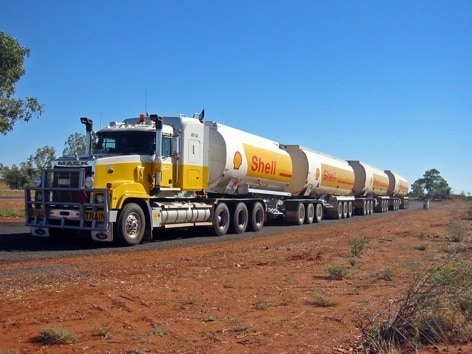The transport industry faces a number of key challenges, notably congestion, safety and effects on climate. Increasing the use of public transport and reducing the use of cars is generally considered to be of overall benefit to the community, but this is often to the detriment to the individual in terms of convenience and direct cost.
Sometimes we must think further ahead and consider new transport concepts. One new idea for mass public transport is the ‘highway train’. Unlike platoons and road trains, this concept involves a new type of vehicle: a form of hybrid carriage with some of the characteristics of both a bus and a train.
In the highway train, battery powered carriages similar to buses would operate independently on our existing urban and rural road network, then link together with a diesel powered locomotive on motorways and major roads.
The key operational aspects of the concept are that the locomotive is a dedicated unit which continuously moves along specified motorways or major A-roads at an optimised speed for efficiency. The carriages dock automatically with the locomotive / carriage stack so they are linked to allow passengers to move along the highway train whilst it is in motion. Personalised information services would advise passengers when a carriage change is required for their intended destination, and the carriages would leave the train at different points along the highway to go to different destinations. This would give passengers a wide selection of destinations without having to use a hub (bus or rail station).

The key physical aspects of the concept are electrically powered carriages, using batteries whilst on their independent urban routes, but plugged into the locomotive on the longer sections of the route for direct power and battery charging. Whilst docked, the carriages retain drive, steering and braking within the train arrangement, which is controlled by the locomotive. The carriages can also separate temporarily within the train to allow a new carriage in or an existing one out in order to optimise scheduling.
By using electric power in urban environments, CO2 and noise emissions would be reduced compared to conventional buses. In order to maximise efficiency, each highway train would be powered by a large and highly efficient internal combustion engine which would charge the battery of each carriage whilst it is docked.
Passengers would board carriages at designated stops on a local level and each carriage would be capable of operating on all sizes of road, allowing passengers to be picked up in both densely populated and rural areas. Once passengers have boarded a carriage, the vehicle would then head towards the nearest highway to join up with the closest highway train. The highway train would then power and recharge the carriages until the time came for them to detach and exit the highway.
Each locomotive would be piloted by their own driver and initially each carriage would be driven by its own driver, but all would become more autonomous as technology and public opinion develop and costs reduce. Whilst connected to the highway train, carriage drivers would be able to rest as the locomotive driver would take over control of the vehicle.
The key benefit of the highway train for the user is the point-to-point conveyance without having to wait for vehicle changes at potentially uninviting stations. The benefits to society are many fold. Reducing urban congestion due to a smaller number of cars on the roads, and inter-urban congestion due to a higher traveller density per road mile compared to a line of cars. A reduction in noise and local pollution in the urban environment due to electric drive, and the use of an efficient and optimised locomotive (due to its large size and narrow duty cycle) would minimise fuel consumption and emissions on the motorways. Finally, expensive new infrastructure would not be required.
Governments could also benefit from the concept, as the cost and time associated with developing a new vehicle is minimal compared to building new infrastructure, meaning that the solution could be implemented quickly. The versatility of the highway train concept also lends itself to the possibility of carriages being re-directed to different destinations depending upon passenger numbers and special events. This versatile approach to transport may in turn help to further reduce Government spend on travel services, as highway trains would not have to run regardless of passenger numbers as is the case for conventional trains.
To realise the concept, a number of new technologies will be required, and some of these are already in development.
By integrating the rollout with traffic management systems, highway trains would be able to avoid oncoming congestion by redirecting the vehicle along other routes. The improvement of traffic flow would in turn reduce journey delays and vehicle emissions, as the highway train would be able to maintain a constant speed and avoid stopping and starting. Carriages could also be equipped with their own braking and steering systems as well as torque vectoring technologies to enable the highway train to steer around obstacles and brake heavily without jackknifing.
Clearly this concept is radical and some new technologies would need to be developed in order for this concept to work, but engineering some radical new form of transportation could prove to be the only cost effective and sustainable option for the future.




Red Bull makes hydrogen fuel cell play with AVL
Formula 1 is an anachronistic anomaly where its only cutting edge is in engine development. The rules prohibit any real innovation and there would be...